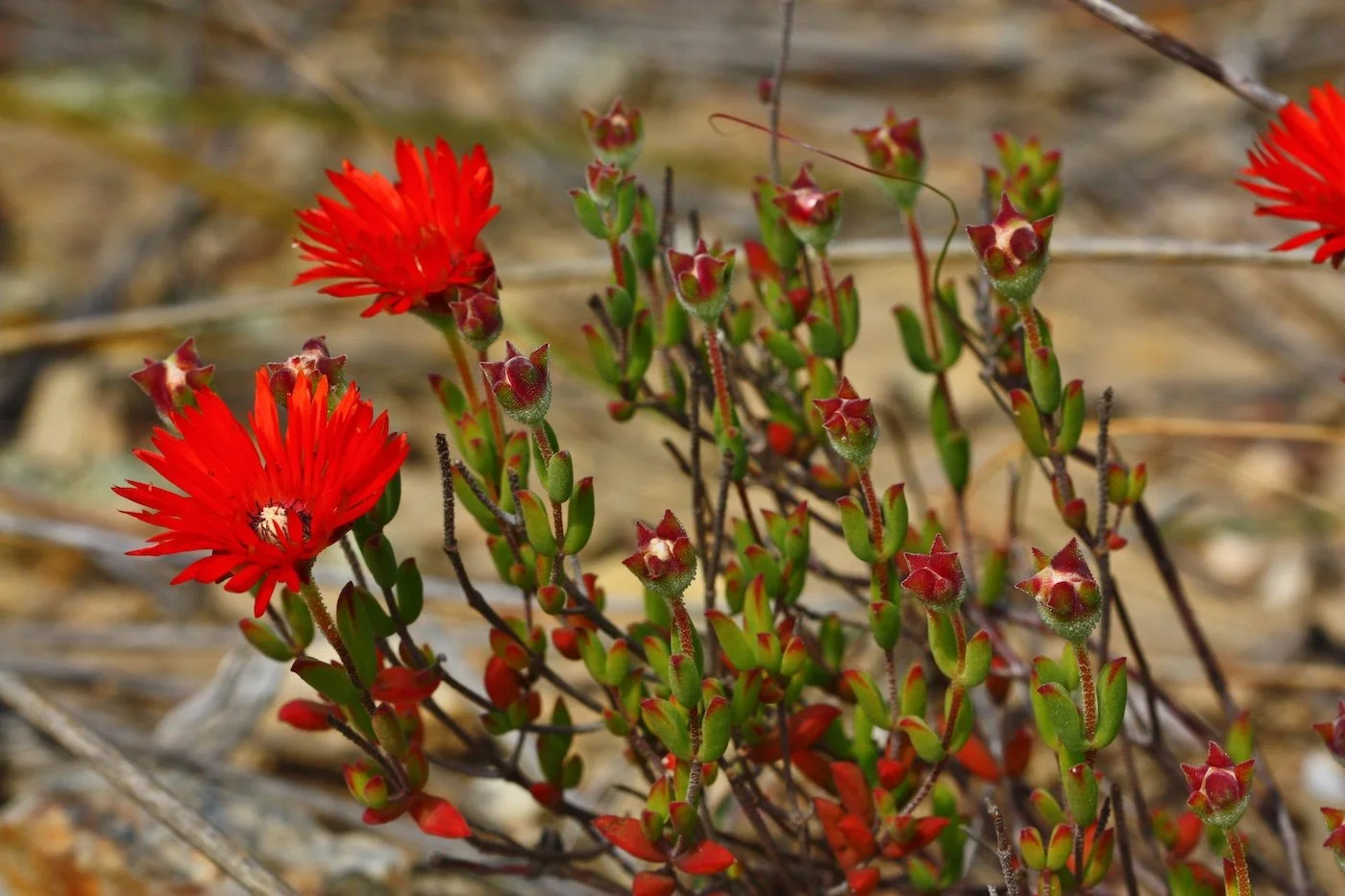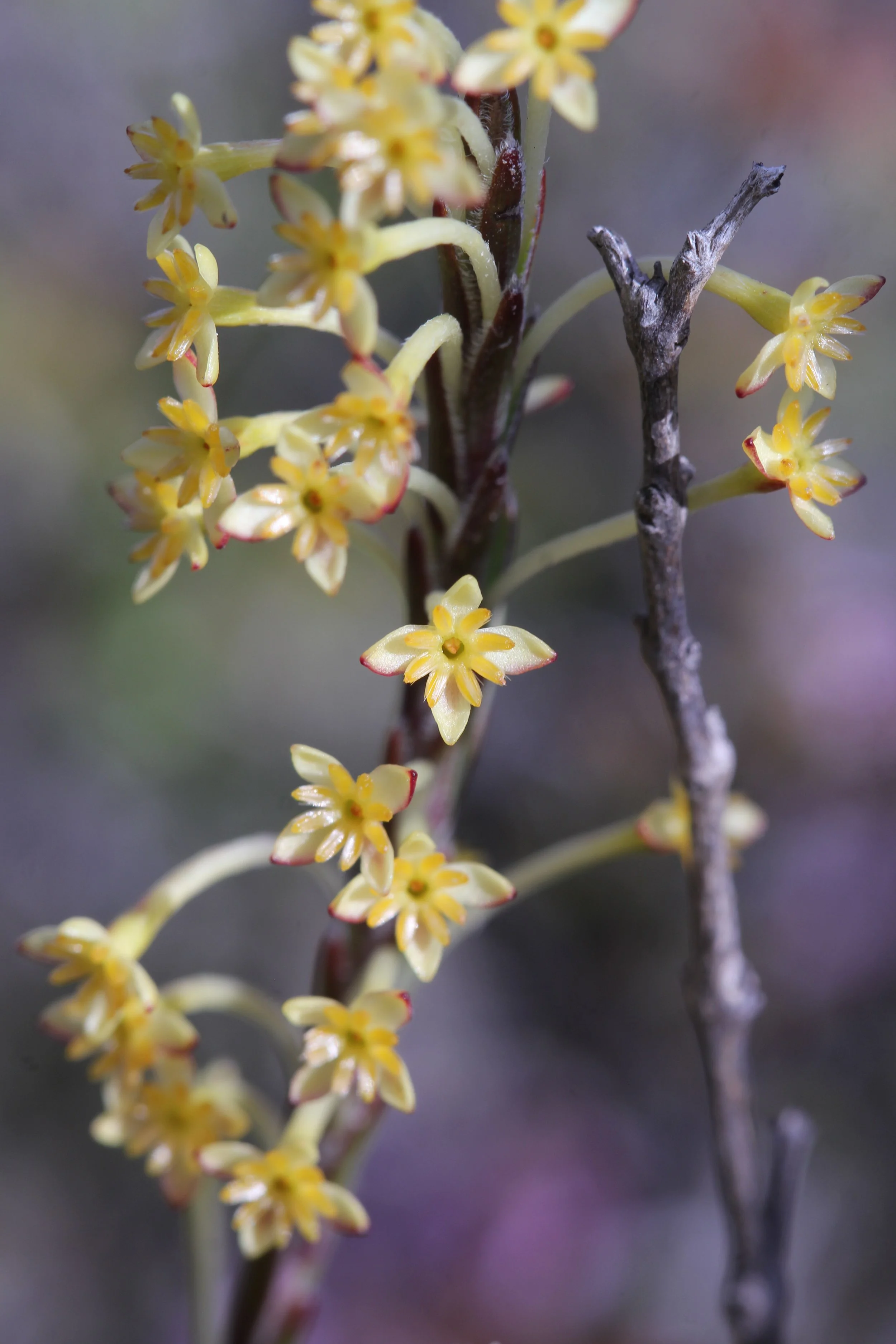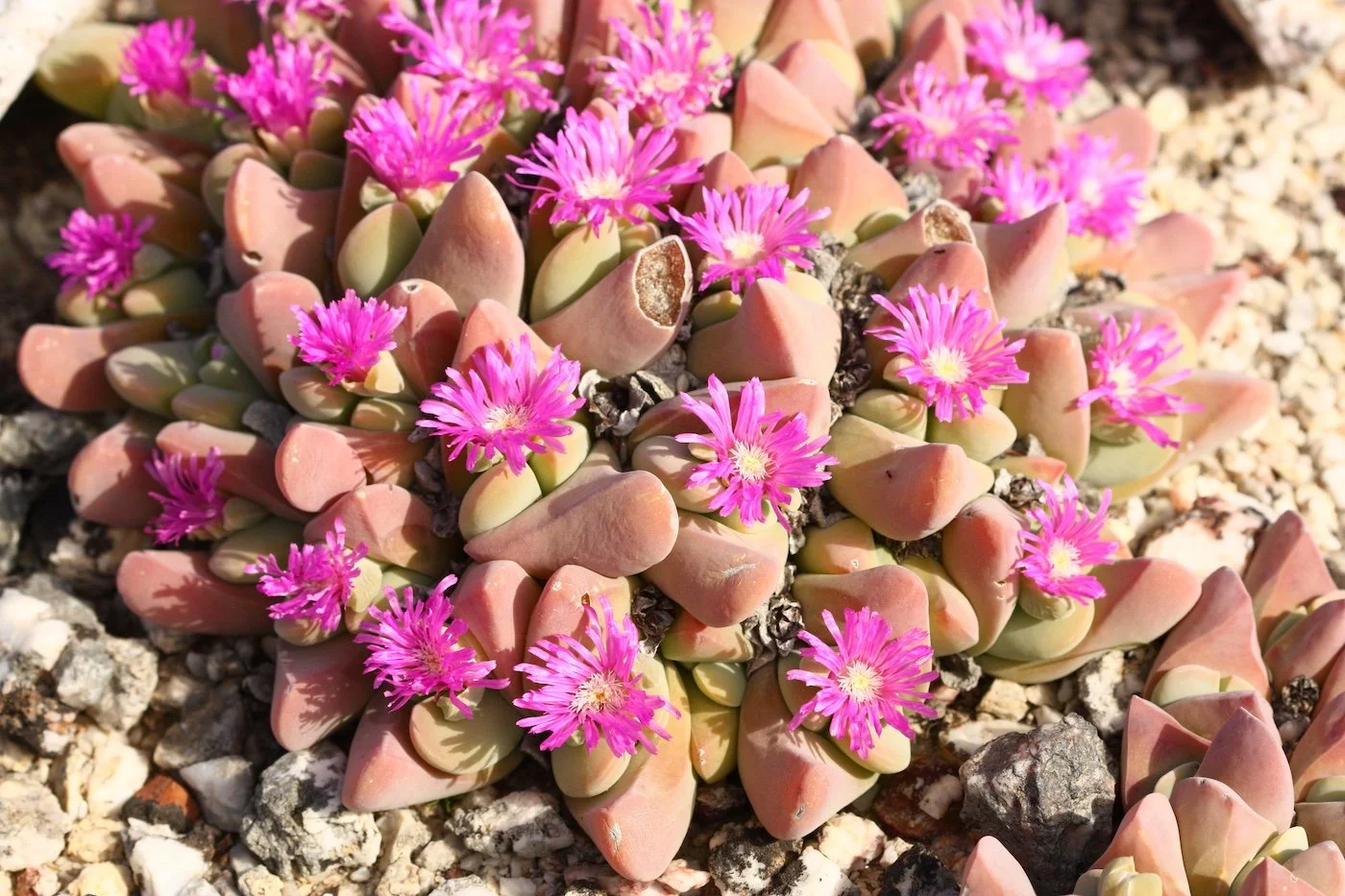PRESERVING THE CAPE FLORAL KINGDOM
At the southern tip of Africa, in South Africa’s Overberg region, lies the Cape Floral Kingdom - a place every bit as rich and romantic as its name implies. Among its diverse habitats is renosterveld, a remarkable vegetation type known for its astonishing biodiversity. In some patches, a single square metre of renosterveld holds more plant species than entire rainforests. Over 9,000 vascular plant species are found here, 69% of which exist nowhere else on Earth. Some grow only on a single hillside, like rare jewels, the last of their kind. Despite its uniqueness, renosterveld remains surprisingly overlooked and under-protected.
Renosterveld is a type of shrubland and grassland defined by:
A dominance of Renosterbos (Dicerocanthus rhinocerotis), a grey shrub that gave the habitat its name ("renoster" means rhinoceros in Afrikaans - early settlers linked it with rhino sightings).
Exceptional botanical diversity, particularly geophytes (bulbous plants) and annual herbs.
Fertile soils (often clay or shale-based), making it far more agriculturally desirable than other types of fynbos.
Though part of a UNESCO World Heritage Site, the Overberg renosterveld has been reduced by a staggering 95%, primarily due to agricultural expansion. Its rich soils proved ideal for crops like wheat and canola, and over decades, vast tracts were ploughed under, often without knowledge of the habitat’s ecological value.
Thankfully, the Overberg Renosterveld Trust (ORT) has stepped in to reverse this loss. In collaboration with partners such as WildLandscapes International, World Land Trust, the IUCN Land Acquisition Fund Netherlands, Leslie Hill Succulent Karoo Trust, and WWF-South Africa, renosterveld is being protected and expanded - acre by acre.
In 2023, the 1,425-acre Plaatjieskraal farm was acquired, doubling the size of the Haarwegskloof Renosterveld Reserve and securing a key piece of land for future connectivity. In 2025, a further 660 acres were added - home to at least 20 breeding pairs of the endangered black harrier. This property, which lies just north of Plaatjieskraal, is now linked to it through a conservation easement in favour of the ORT. Together, the expanded reserve protects one of the world’s most threatened ecosystems and creates new opportunities for wildlife corridors connecting to De Hoop Nature Reserve and beyond. This progress has only been possible thanks to the vision of ORT and the farmers who have chosen to sell or conserve their land.
The mission ahead is clear: to continue restoring renosterveld, to build awareness of its beauty and rarity, and to inspire a sense of national pride in protecting one of South Africa’s most extraordinary natural treasures.
All photos: Dr Odette Curtis-Scott
The Overberg Renosterveld Trust (ORT), founded in 2012, works to conserve South Africa’s lowland renosterveld - one of the most threatened plant communities on Earth. ORT partners with landowners to secure permanent protection through servitudes and manages the Haarwegskloof Renosterveld Reserve. Its work combines research, restoration and stewardship to protect remarkable botanical diversity.













